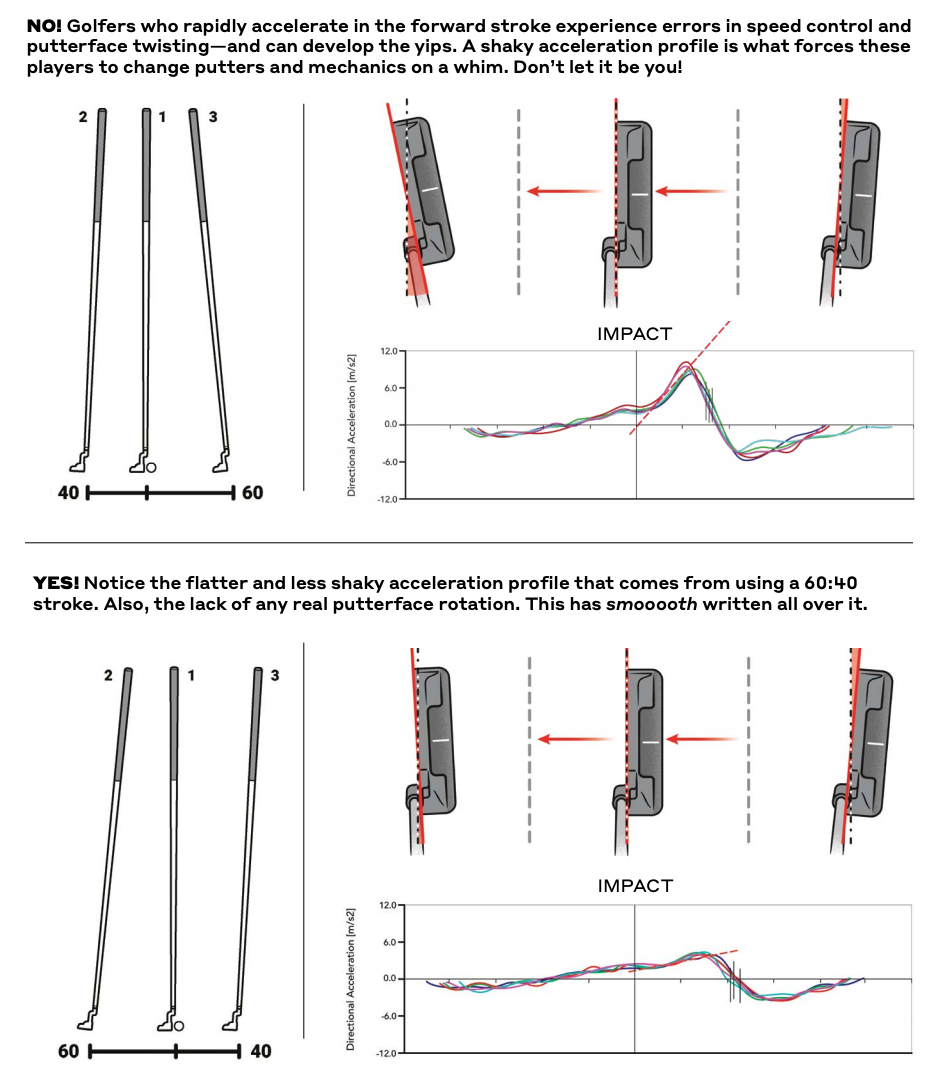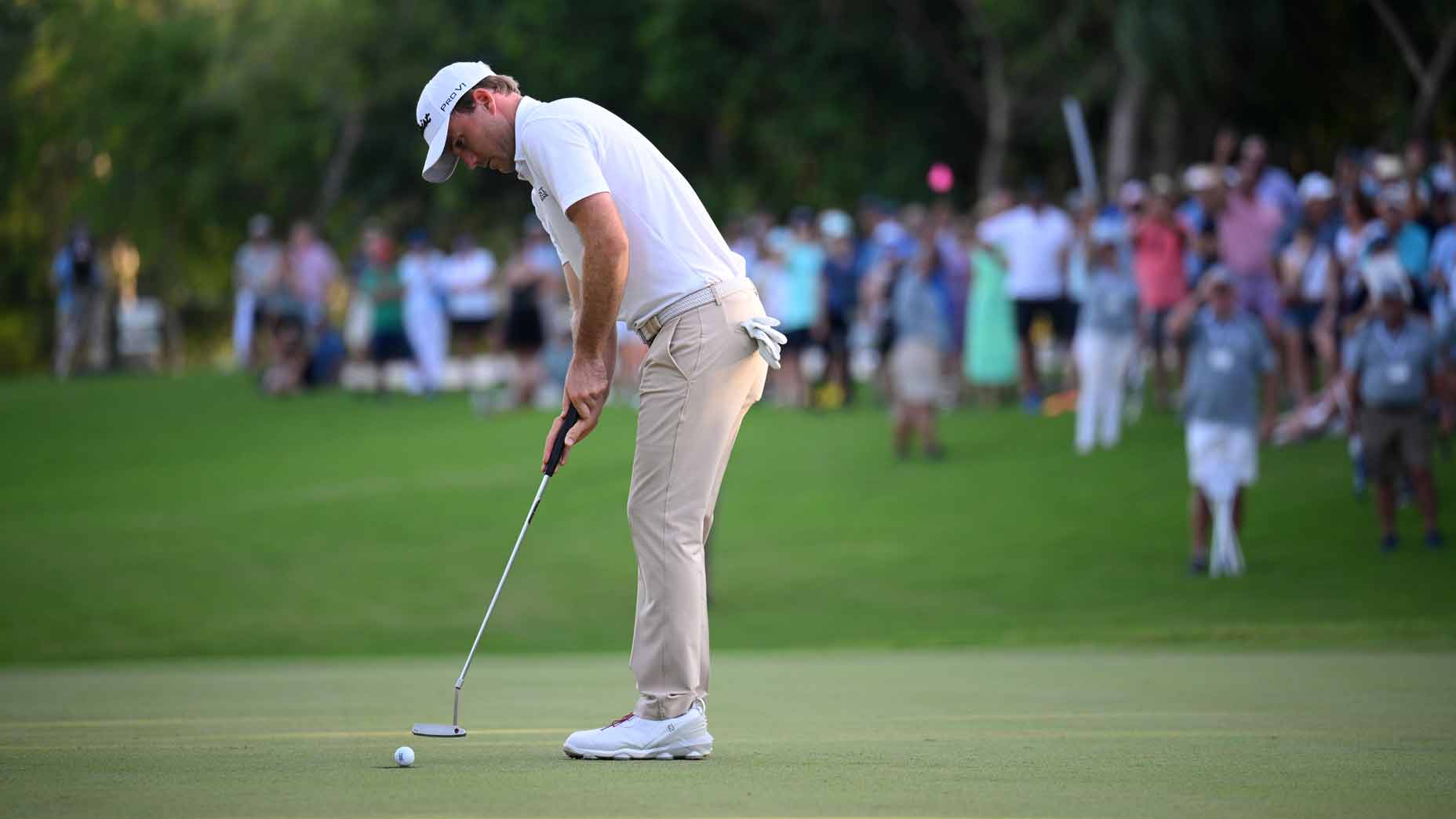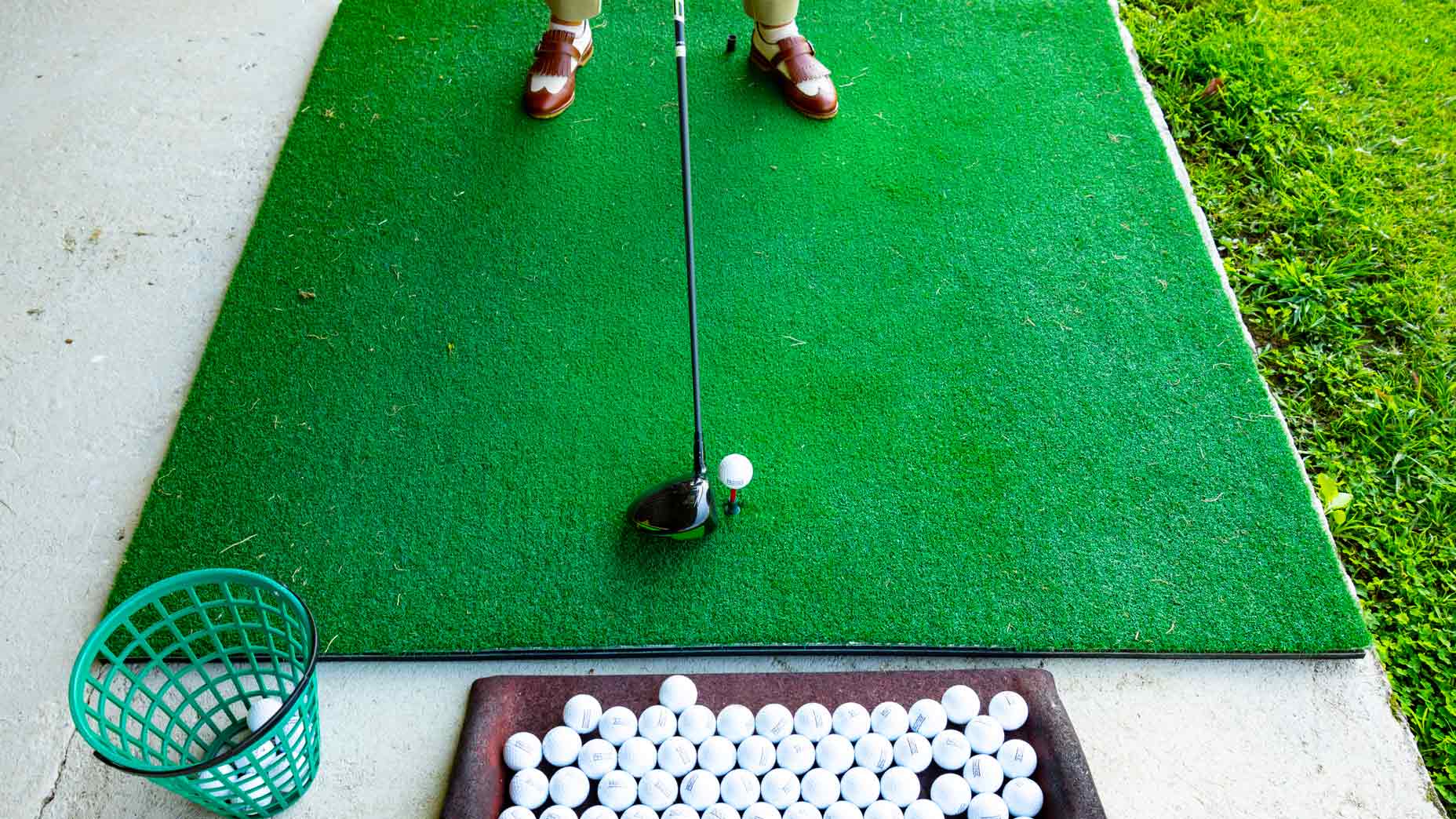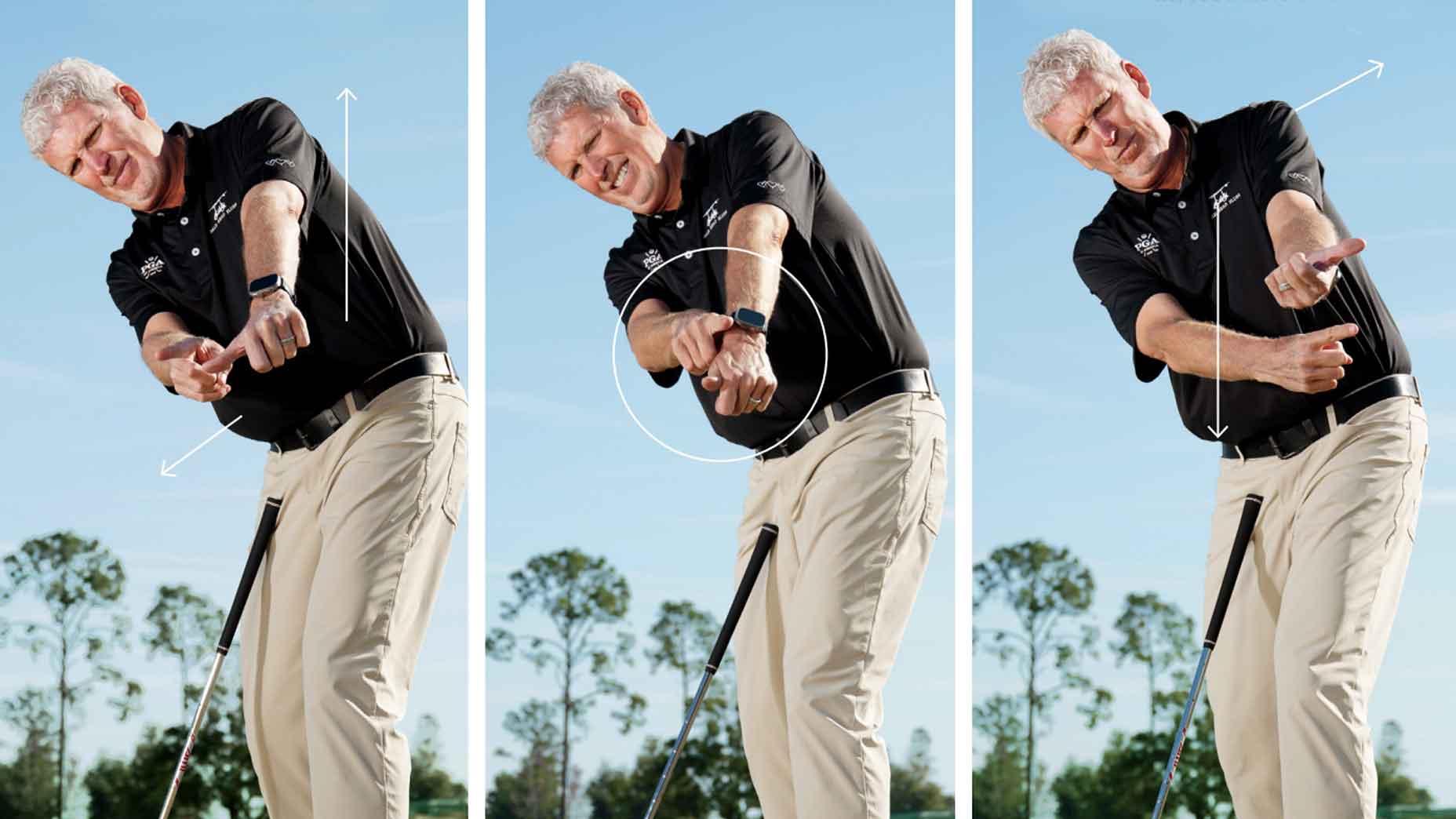Over our careers, we’ve seen golfers suffer from pushes, pulls, too-long and too-short putts, to say nothing of (yikes!) the yips. Almost all of these well-intentioned players miss while trying to accelerate through impact. Lucky for them (and you), we have a solution, one developed years ago and verified using today’s technology.
It dates back to me, Joe Hallett, meeting Art Olfs early in my teaching career. Olfs was a mathematician and engineer who was fascinated with — of all things — putting strokes. He found that a good putter’s follow-through was much shorter than their backstroke. Using hand-written equations and charts, he proved that these players didn’t accelerate through impact as most golfers think but, rather, moved the putterhead at a constant rate of speed so it could simply collide with the ball.
As Olfs’ data set grew, I, Joe Plecker, began measuring dynamics in players with the yips and found the same results, the most important being that good putters vary backstroke length to control distance. Moreover, they let the putter “fall” into the ball, resulting in less face twisting and centered strikes. The equation Olfs found — and that we have tried to disprove — is that the optimum stroke employs a 60:40 ratio for all putts. Read on below to learn how it works!
1. Stroke science
Taking Olfs’ cues and research performed using the SAM PuttLab (see below), we found that over-accelerating the putterhead from the end of the backstroke to impact dramatically and negatively affects control, face rotation (twist) and total forward stroke size. The goal, as the data proves, is to swing it more like a pendulum, moving the putter back and through the same distance with zero speed manipulation — a pure 50:50 stroke (i.e., equal on both sides of the bottom of its arc).

In reality, however, it’s more like 60:40, because the ball eventually gets in the way. This minor collision indeed impedes the natural flow of your stroke, limiting, albeit slightly, the length of your followthrough. And since the ball “knows” only what happens at impact, the length it travels is almost entirely decided by how far you take the putter back.
2. The 60-40 recipe
Now that you understand the science, put it to the test! Place a mark on the green where you normally position the ball in your putting stance. Make your everyday stroke. Have a friend mark where your backstroke ended with a tee and set a second tee on the target side of the mark at roughly two-thirds that distance. (For example, if your backstroke traveled 12 inches, set the second tee eight inches in front of the mark.) Replace the mark with a ball. Now putt, stopping your backstroke at the first tee and then letting your putter “fall” into the ball. Keep putting. Over time, you’ll notice that your stroke automatically stops at the second tee. More important, your putts roll out the same distance. Feel free to cheat the drill setup with the Putting Stick (tpkgolf.com), which marks several 60:40 combos for you.
3. How to get the 60:40 feel
Hit the practice green with a new box of balls. Choose a straight target, set up your 60:40 stroke guides as in the test at left and start rolling putts. Your goal: Group as many putts together as you can. (Hint: Once you’re able to consistently make the same 60:40 stroke size, your putts will begin to gather nicely.) Coming up short? Easy. Make a longer backstroke but keep the same 60:40 ratio. Do the opposite if you’re rolling it too far. In either case, always let the putter fall to the ball. The method works so well you can putt with a whippy putter, driver, wedge or even a shovel!
4. Trust the physics
Start like this
Before any round, warm up on the practice green with the tee drill to get a feel for how far the ball is rolling using your 60:40 stroke. When you get your touch just right, you’re ready to go low.
Why it’s important
You’ve heard every putting tip in the game, yet you still miss. Focusing on the dynamics of your 60:40 putting stroke will solve many issues currently plaguing your putting, such as squaring the face, hitting the sweet spot and owning your distance control.
Try a heavy putter
If you find it difficult to swing your current putter like a pendulum, try a heavier model or add weight to the putterhead. This helps free up your new swinging stroke. Also, a softer grip never hurts on the greens.
Obey your stance
Use your setup as a personal framework to manage all putt lengths. Short, medium, long and extra-long putts are as easy as controlling the length of your backstroke — a single variable — in relation to your feet. With a little practice, you’ll be money from all points around the cup.
Latest In Instruction

Golf.com

Golf.com Photographer









